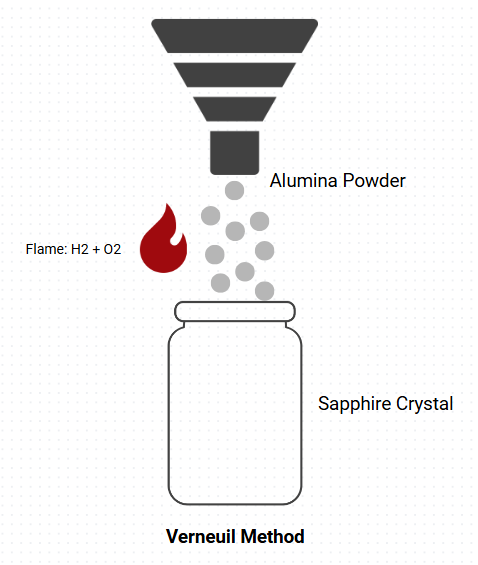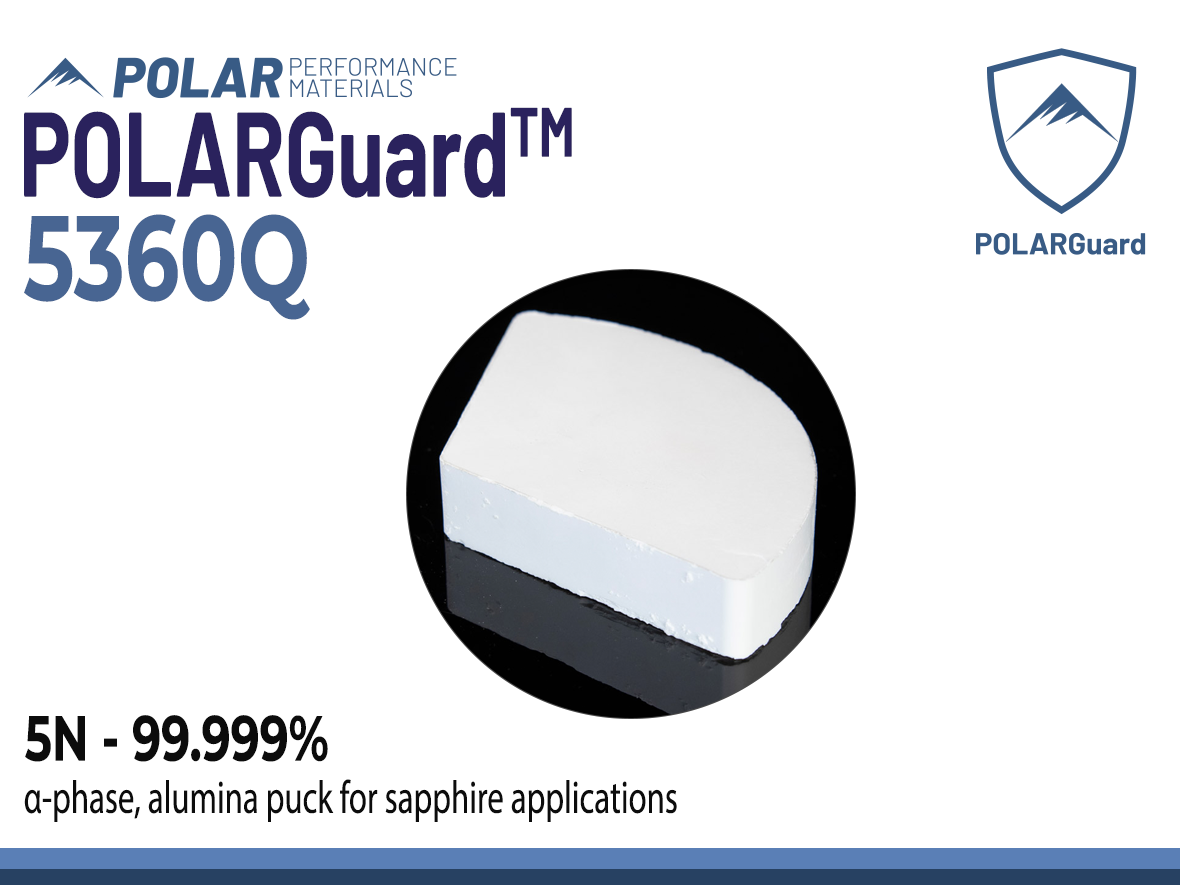CRYSTALGuard 5360Q | 5N Purity Alumina Pucks
- 5N purity (99.999%)
- Puck form
- Ideal for Sapphire Applications
Product Description
CRYSTALGuard 5360Q is a high-purity alumina product available in pucks characterized by its 5N (99.999%) purity level. It features an alpha crystal phase and an average mass of 450 grams, optimized for sapphire applications. This material offers consistent performance, making it suitable for a variety of high-tech applications requiring excellent reliability and high purity.
CRYSTALGuard 5360Q High Purity Alumina meets the following requirements:
- Manufactured using ISO 9001:2015 Certified processes.
- Puck format
- Ultra-low impurities
- Optimized Surface area
- Process stability
- High temperature resilience
- High quality in harsh conditions
Product Key Features
- Ultra High Purity — Ensuring consistent performance, reliability, and compatibility.
- Precise Particle Size Control — Engineered distribution for optimal packing density, flowability, and surface finish.
- Eco-efficient Manufacturing — Minimizing environmental impact while maximizing purity and quality.
Applications:
- Polar's CRYSTALGuard alumina pucks are designed for sapphire growth and sapphire substrates for optics and electronics.
Technical Specifications
| Chemical Properties | |
| Phase | α |
| General Properties | |
| Density (g) | 3.4 g/cm3 |
| Length | 59 mm |
| Purity | 99.9999 % |
| Width | 5.9 cm |
Additional Information
Frequently Asked Questions about CRYSTALGuard
The CRYSTALuard line is specifically designed for applications in sapphire, where extremely low contaminants are required. It is produced with a lean, high-yield method, which is what makes the CRYSTALGuard line the highest purity alumina available.
How is CRYSTALGuard used in Sapphire Applications?
High-purity alumina is used in LEDs, optical sensors, and advanced displays, and can also be used as ceramic insulation between interconnects. To grow high-quality sapphire crystals, manufacturers need alumina with ultra-low impurity levels and consistent particle characteristics.
What documentation is available for validation?
Polar provides full quality assurance reports, including particle size data, elemental analysis, and batch traceability. This supports crystal growth qualification requirements.
What purity levels are required for sapphire production?
Polar offers alumina powders at 4N and 5N purities for sapphire production.
High purity alumina can come in either spherical or irregular shapes. Spherical particles are smooth and uniform, offering excellent flow, easy dispersion, and consistent packing. Irregular particles are angular and jagged, providing better mechanical interlocking and abrasion. Spherical morphology is ideal for coatings or pastes, while irregular morphology is ideal for structural ceramics or abrasives.
Can I request a customised particle size?
Yes. Standard distributions and customised sizing is available, including submicron options, to align with your coating or forming process. Our team can match existing specs or develop a tailored grade with full documentation.
How is alumina used for sapphire components?
Sapphire is typically produced by melting high-purity alumina and forming single crystals through methods such as the Verneuil or Kyropoulos process. Purity and consistency of the starting powder are essential to achieve defect-free crystals.
What format of HPA should I use for coating applications?
Powder formats are primarily tailored for coating feedstocks. These are designed for high flowability and predictable deposition, with purity levels up to 5N depending on the application.
| Purity | Key Element concentration (ppmw) | |||
| Na | Si | Ca | Fe | |
| 5N | 5 | 6 | 4 | 5 |
HPA and Synthetic Sapphire
Natural sapphire is one of the toughest and most durable substances on earth. It is a form of aluminium oxide, which is why high purity alumina is the critical and primary ingredient for manufacturing synthetic sapphire. Synthetic sapphire holds the same properties and strength as natural sapphire gemstones, but without the colouring agents. Aside from its superior strength, other key properties of synthetic sapphire include scratch and corrosion resistance, chemical stability, the ability to transmit in UV, visible and infrared wavelengths, and the ability to withstand extreme temperatures. It is an ideal material for creating scratchproof glass for smartphones and premium watch faces.
How is Synthetic Sapphire made?
Verneuil method is a well-established technique for growing single crystals of oxides that have high melting temperatures. The largest application of the technique is for the growth of sapphire and ruby. One of the most crucial factors in successfully crystallising is obtaining highly pure starting material, with at least 99.9995% purity. In the case of manufacturing rubies or sapphires, this material is alumina. The presence of sodium impurities is especially undesirable, as it makes the crystal opaque. Depending on the desired colouration of the crystal, small quantities of various oxides are added, such as chromium oxide for a red ruby, or ferric oxide and titania for a blue sapphire. Other starting materials include titania for producing rutile, or titanyl double oxalate for producing strontium titanate. Alternatively, small, valueless crystals of the desired product can be used.




